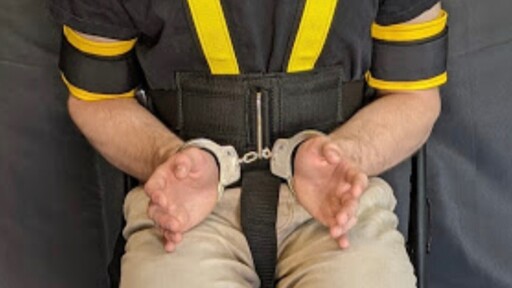The Nigerian man described being roused with other detainees in September in the middle of the night. U.S. Immigration and Customs Enforcement officers clasped shackles on their hands and feet, he said, and told them they were being sent to Ghana, even though none of them was from there.
When they asked to speak to their attorney, he said, the officers refused and straitjacketed the already-shackled men in full-body restraint suits called the WRAP, then loaded them onto a plane for the 16-hour-flight to West Africa.
Referred to as “the burrito” or “the bag,” the WRAP has become a harrowing part of deportations for some immigrants.
“It was just like a kidnapping,” the Nigerian man, who’s part of a federal lawsuit, told The Associated Press in an interview from the detainment camp in which he and other deportees were being held in Ghana. Like others placed in the restraints interviewed by the AP, he spoke on the condition of anonymity for fear of reprisals.



In any of the handful of bodycam videos I’ve seen where someone was loaded into “the wrap,” they start yelling in pain at exactly the same point, at the final step when the strap fixing the chest to their legs gets tightened up so their body is folded forward. It is clearly designed so that it can be tightened further than needed (the person’s already completely under control by the time they reach that point anyway) to inflict pain. There’s no reason it needs to be able to go tighter than just sort of a half-situp position.
I’m also not surprised that people have died in them (maybe from trouble breathing from having their body folded that way, I don’t know, but it definitely looks dangerous).